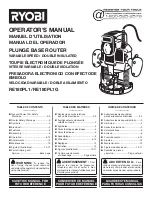
Wireless LAN—Getting Technical
FRITZ!Box 7490
111
Wireless Auto Channel
With the wireless auto channel function, the FRITZ!Box auto-
matically searches for the channel subject to the least inter-
ference. This process takes into consideration interference
from radio networks in the vicinity (wireless access points)
and potential sources of interference (for instance video
bridges, baby monitors, microwave ovens). Should problems
with interference persist despite this function, try to identify
the source of interference and switch it off manually.
5-GHz Frequency Band
The FRITZ!Box can operate in parallel in the 5-GHz frequency
band. This frequency range is used much less often than the
most common 2.4-GHz frequency range.
In the 5-GHz frequency band the FRITZ!Box supports automat-
ic channel switching by DFS (Dynamic Frequency Selection).
DFS ensures that the channels from 52 to 140 are kept free
for higher-priority users, like weather radar systems. If you
are operating your FRITZ!Box in one of these channels, it mon-
itors the selected channel periodically for higher-priority us-
ers, and, if necessary, switches to a different channel. Note
that the FRITZ!Box waits up to ten minutes, as legally re-
quired, before occupying a free channel. During this period
you cannot register any wireless devices. The wireless LAN
connection is then established automatically.
A prerequisite for use of the 5-GHz frequency band is that
wireless devices used in the network support this frequency
range in accordance with the IEEE 802.11a, IEEE 8002.11n or
IEEE 802.11ac standard.
In the 5-GHz frequency band, two large ranges of frequencies
can be used: 5.15 GHz to 5.35 GHZ, and 5.47 GHz to
5.805 GHz. In the EU, up to 19 channels are available in these
areas:
5150—5350 MHz (channels 36, 40, 44, 48, 52, 56, 60 and
64)
5470—5725 MHz (channels 100, 104, 108, 112, 116, 120,
124, 128, 132, 136 and 140)
Different conditions may apply for the individual ranges.
Summary of Contents for Box 7490
Page 191: ......
















































